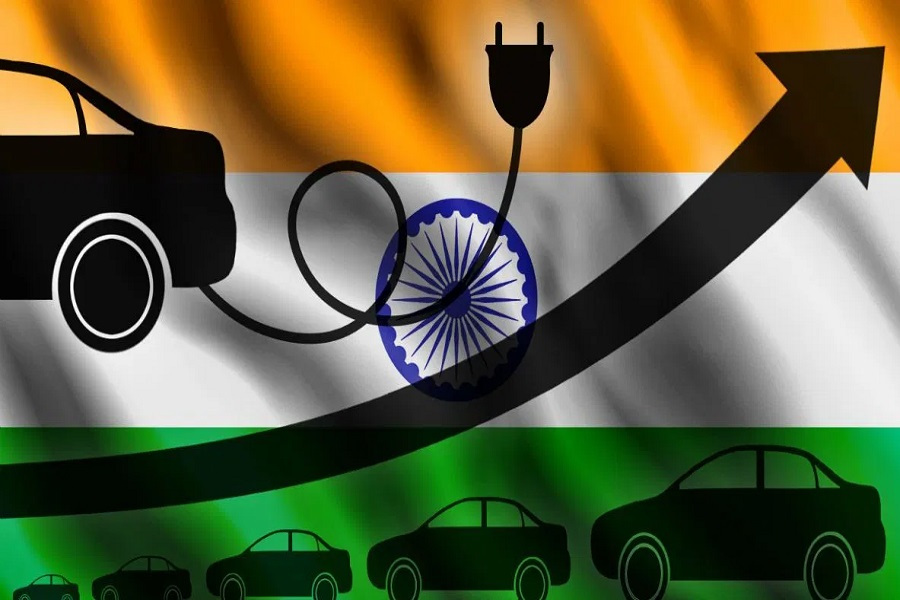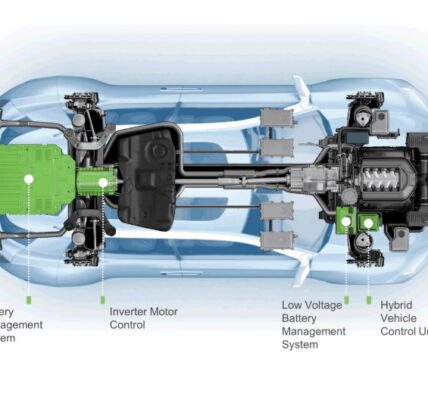India is presently witnessing a rapid rise in the adoption of electric vehicles (EVs). Additionally, a decline is being seen in the price of various components, which is making EVs more affordable for people. Both these factors are projected to propel the Indian electric vehicle component market at a 22.1% CAGR during 2020–2030 (forecast period); the market generated $536.1 million in revenue in 2019.
The cost of the various components that go into manufacturing an electrically powered automobile is continuously reducing, as a result of economies of scale. For instance, the battery price is expected to fall by more than 30% between 2018 and 2025, thus making electric vehicles (EVs) more affordable.
During the same period, a 24%, 23%, 60%, 9% 6.5%, 8.6%, 8.5%, and 21% drop is predicted in the prices of motors, controllers, electric vehicle supply equipment (EVSE), thermal management systems, power distribution modules (PDMs), vehicle interface control modules (VCIMs), high-voltage cables, and DC–DC converters, respectively.
During the forecast period(2020-2030), the passenger car category is predicted to witness the fastest growth in the Indian electric vehicle component market, as numerous transport companies, as well as the government, are taking initiatives to increase the number of electric cars in shared mobility fleets.
For two-wheelers, brushless direct current (BLDC) motor was the highest-revenue-generating classification in the Indian electric vehicle component market during the historical period (2014–2019), as such motors are more cost-effective compared to others of similar power ratings.
In 2019, the original equipment manufacturer (OEM) bifurcation held larger share in the Indian electric vehicle component market for two-wheelers. This is because, currently, the purchase rate of such automobiles is higher than the part replacement rate, which is why OEMs generate higher demand for two-wheeler components.
Till 2030, Tripura would grow the fastest in the Indian electric vehicle component market for three-wheelers. This is attributed to the increasing number of e-rickshaws in operation in the state, which is further leading to the rising demand for various components from original equipment manufacturers (OEM) as well as aftermarket companies.
Till 2030, the highest CAGR, of 61.7%, would be displayed by the battery management system (BMS) category, in the Indian electric vehicle component market for passenger car battery packs in India. This is because a BMS protects the battery pack, which is the most crucial and expensive component of an electric car, from damage, by making sure it is not operated beyond its safe functional area. Apart from managing and controlling its operations, a BMS also notifies car owners of the current battery status, which is why its integration is swiftly surging in electric cars.
Delhi was the largest Indian electric vehicle component market for commercial vehicles during the historical period, owing to the high pollution levels in the city, which have steadily raised the number of electric buses and trucks in the city in the last few years.
Different states dominate the Indian electric vehicle component market for different vehicles in India, on account of the different demographics, regulatory scenario, and level of urbanization. For instance, while Uttar Pradesh has been the largest procurer of EV parts, it has primarily been because of the high penetration of electric three- and two-wheelers. Similarly, Delhi is home to the largest electric commercial vehicle fleet, whereas Maharashtra has the highest number of electric passenger cars in operation.
Indian electric vehicle component market players are entering into partnerships, to make the most of the opportunities being provided by the rising EV sales in the country.
For instance, in February 2019, Contemporary Amperex Technology Co. Ltd. began collaborating with Honda Motor Company Ltd. for EV batteries, primarily lithium-ion (Li-ion) variants. Under the agreement, the former company will provide Honda with Li-ion EV batteries, with a cumulative storage capacity of 56 gigawatt-hours (GWh) by 2027. Additionally, Contemporary Amperex Technology will set up an office near the research unit of Honda in Tochigi Prefecture, outside Tokyo.
In the same vein, in November 2018, Mahindra Electric Mobility Limited and +ME Technologies entered into a partnership for the construction of a manufacturing facility near Bengaluru. The unit, being constructed with a $14.65 million (INR 100 crore) investment by Mahindra, would produce battery packs, motor assembly, and power electronics.
Amara Raja Batteries Ltd., Exide Industries Ltd., Okaya Power Pvt. Ltd., Eastman Auto & Power Ltd., Panasonic Corp., Sparco Batteries Pvt. Ltd., Contemporary Amperex Technology Co. Ltd., Robert Bosch GmbH, DENSO CORP., and CY International are the key players in the Indian electric vehicle component market.
–Report by P&S Intelligence








